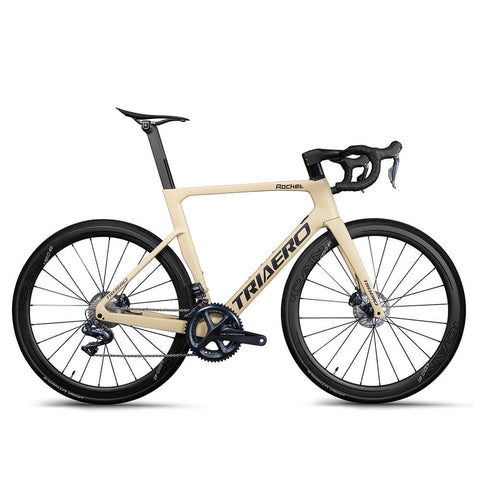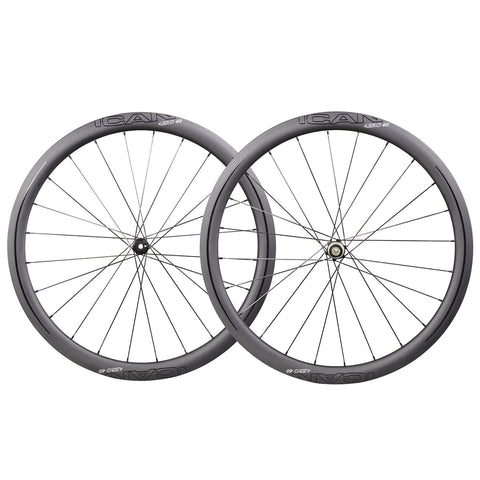What Are Road Bikes And Gravel Bikes Designed For?
Although dirt bikes are made to provide a more fun and flexible riding experience in diverse situations, road bikes are usually developed for the demanding needs of racing and speed.
Road bikes are meant especially for high-speed riding on smooth asphalt roads. Their unusual geometry and slender tires help them to be lightweight and nimble.
By contrast, gravel bikes are designed to negotiate challenging terrain and can readily negotiate rocky ground. Their geometry is geared toward stability, which causes an upright body posture. Rough road vibrations can be significantly absorbed by the broad tires than by road bikes.

Geometry
While dirt bikes are made to provide a flexible riding experience in many circumstances, road bikes are made to satisfy the demands of racing and speed.
Designed with "race" geometry—that is, a responsive, aggressive, and aerodynamic riding posture—road bikes offer Maximizing power transfer and efficiency is the primary objective so that riders may reach their best performance at high speeds. Usually featuring shorter wheelbases, higher heights, and more up-right headtubes, road bikes help you to flatten your body position, therefore improving aerodynamics and enabling you to reach your maximum speed. Bottom bracket on road bikes is less than that of gravel bikes. Riders' center of gravity falls as a result, which increases their confidence when cornering and downing fast speeds.
Higher stacks and a slacker headtube angle help gravel bike frames produce a more upright body position for the rider. While riding over uneven ground, this straight posture offers improved comfort, control, and stability. Usually with a sloping top tube, gravel bikes have a taller stack.
Furthermore, gravel bikes' greater wheelbase makes them more steady and lets bigger tires possible. On tricky and uneven roads, safe handling depends on avoiding toe overlap with the front wheel; hence, this extended wheelbase also helps.
The bigger bottom bracket of dirt bikes is another crucial aspect since it gives more ground clearance for the pedals. Riding on uneven ground calls for this ability since it helps to avoid pedal strikes.

Wheels
There are two main differences between road wheels and off-road wheels.
The first one is the rim depth. Since road bikes usually reach higher speeds, many riders prefer deeper wheels of around 40-60mm to gain aerodynamic advantages. ICAN AERO disc series is a best-selling product known for its aerodynamic design. Its rim depth options include 40mm, 50mm, and 55mm. Gravel bike wheels, on the other hand, tend to be shallower, ranging from 30-45mm. The ICAN G24 features a rim depth of 40mm, for instance. This helps to keep the wheels nimble at the typical speeds encountered in gravel riding.
The second difference is the inner rim width. Road bike wheels generally have a maximum inner width of 21mm, whereas gravel bike wheels typically range from 21-25mm. The ICAN G25 features a inner width of 25mm. This added width supports wider tires, allowing for better tire feel when cornering and the ability to run lower pressures. Additionally, the wider inner rim width allows for full utilization of tubeless tires.

18.35mm inner width road bike wheels
Tire Size And Pressure
Performance of your bike depends much on tires. Wider tires usually provide higher grip, thereby enhancing your balance and control. Conversely, narrower tires produce a smoother ride since less contact area with the ground reduces rolling resistance and increases speeds.
Usually between 40 and 45mm, gravel bikes are made to fit wider tires. On uneven ground, this increases stability and gives a greater grip. Conversely, road bikes often feature smaller tires, 25mm to 28mm, meant to maximize speed and reduce rolling resistance on paved roads.
Using a tire width of 23–25mm and inflated with 90–100 PSI pressure helps road bikes reduce rolling resistance. Faster rolling is made possible by this arrangement, although it could also cause the ride to be rough. Conversely, dirt bikes call for larger tires to offer improved traction on varied ground. Usually, a tire with a width of 30 to 40 mm and a lower pressure of about 40 PSI is utilized so that it may absorb shocks and lower the chance of punctures.
With narrow, high-pressure tires and speed on smooth, paved roads in mind, road bikes Conversely, gravel bikes have wider, lower-pressure tires that can manage a range of treads and sizes and are suited for difficult terrain.
The clearance between the forks, seatstays, and chainstays determines the widest width of tires a bike may run on. Usually having more room to fit a greater spectrum of tire sizes and treads, gravel bikes In wet and muddy weather especially, this is crucial since it provides ample room to avoid mud blocking the tires.

Handlebar
Road bikes usually come with shorter and narrower handlebars. The drop part of the handlebar goes straight down to keep the rider's body shape as compact as possible. This reduces the contact area with the wind and improves aerodynamics.

On the other hand, gravel bikes are equipped with flare handlebars. This means the drop part of the handlebar drops on an angle towards the outside of the bike. The flare handlebars give the rider's arms more room to move and maneuver the bike more freely. This improves control and stability while riding on rough terrain.

Gravel Intergrated Handlebar HBG01
Brakes
Disc brakes have been widely used in mountain bikes for a long time. However, they have only recently started to gain popularity among road cyclists. Some riders still prefer rim-style brakes as they are lighter. On the other hand, disc brakes are exclusively featured in gravel bikes. They offer superior stopping power on various surfaces, making them more reliable and efficient.
Gears
Mountain bikes have long ago made extensive use of disc brakes. Still, they have just lately become somewhat popular among road riders. Some riders still like rim-style brakes since they are lighter. Conversely, disc brakes only show up on gravel bikes. Their better stopping power on different surfaces increases their dependability and efficiency.
Usually featuring two or three chainrings in the front and a smaller cassette range in the rear, road bikes Road bikes are made to be ridden at faster speeds and up steep grades; hence, they demand a wide variety of gears. Though alternative configurations are also available, cassettes nowadays typically range from 11-28t to 11-34t, and chainrings are typically set up in a 53/39, 52/36, or 50/34 arrangement.
Gravel bikes use a different gear system than standard cycles. Usually, they accompany one or two chains. One chainring does away with the front derailleur's need. Usually done at a slower speed, gravel cycling requires cyclists to climb steep gravel slopes on rough ground using bigger gears in Cassette form. Usually used cassettes have 10-42t to 10-52t. Usually including smaller chainrings, such as 46/30t or 48/31t, a two-chainring configuration is:
FAQ
Can I ride my gravel bike on the road?
Definitely! Popular among cyclists who want to have one bike that can meet all their demands, gravel bikes are made to function well both on and off-road. Your gravel bike is a flexible and dependable choice whether your ride is to the office or on the trails.
Is comfort more derived from a gravel bike than from a road bike?
Though they offer a wider and lower-pressure design that makes riding on any kind of road surface more pleasant, gravel tires may not roll as swiftly on the road. Certain gravel bikes feature optional front and rear suspension to improve riding smoothness even more.
Is road biking easier than gravel riding?
Because the gravel's looseness and irregularity produce a less stable riding surface, which influences your bike handle less predictably than road riding.
Should a novice be using a gravel bike?
For novices, a gravel bike is perfect since it can negotiate several surfaces and terraces, thereby offering flexibility for all riding conditions.
